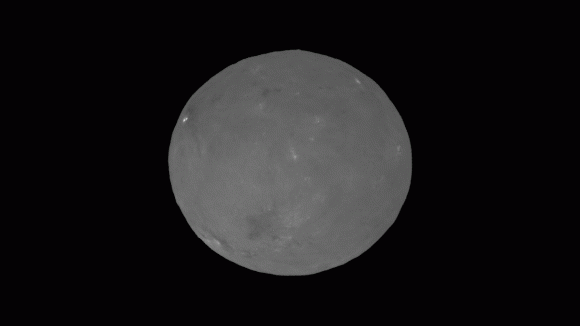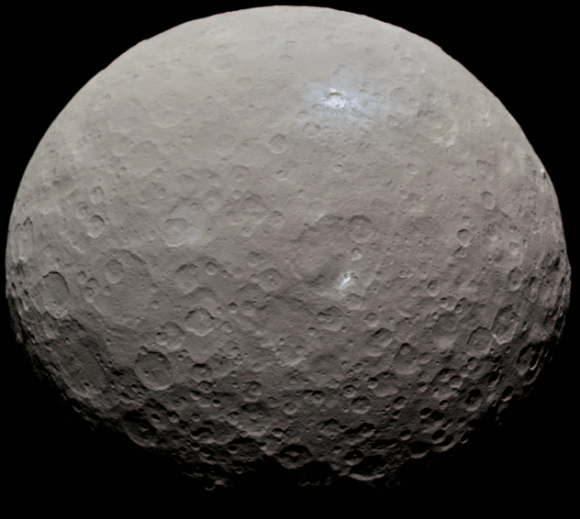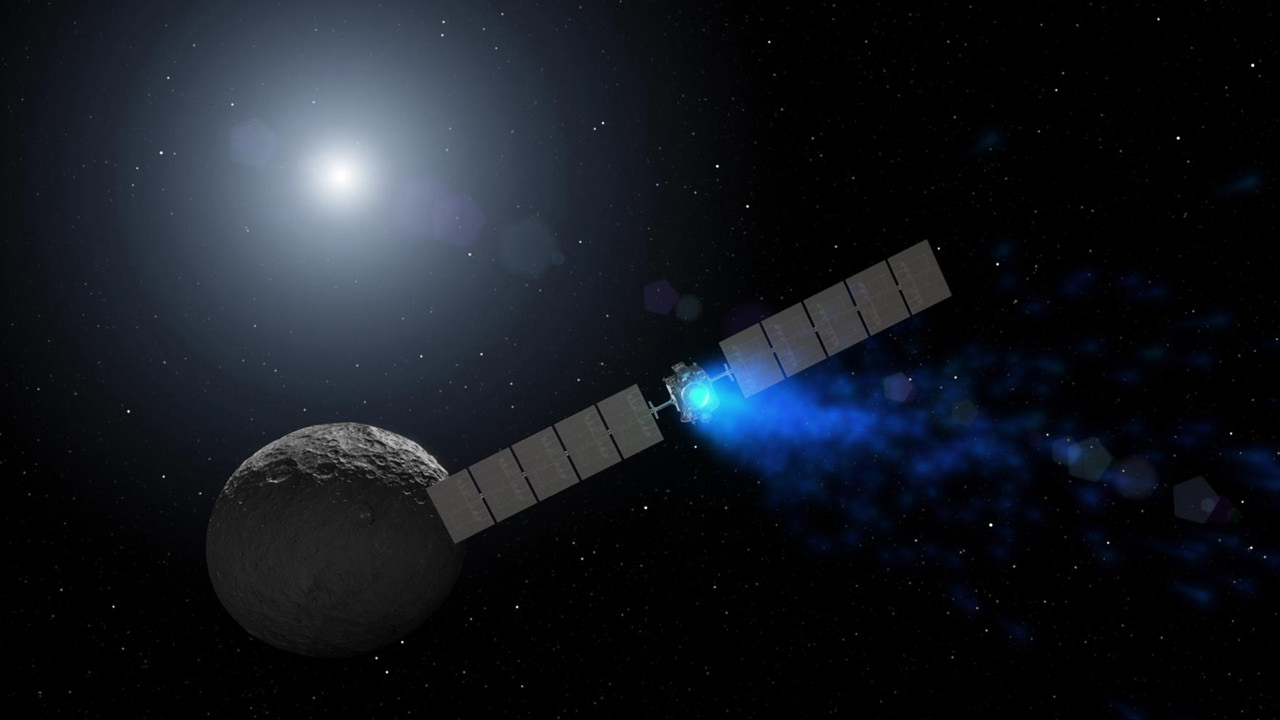The Dawn probe continues to excite and amaze! Since it achieved orbit around Ceres in March of 2015, it has been sending back an impressive stream of data and images on the protoplanet. In addition to capturing pictures of the mysterious “bright spots” on Ceres’ surface, it has also revealed evidence of cryovolcanism and the possibility of an interior ocean that could even support life.
Most recently, the Dawn probe conducted observations of the protoplanet while it was at opposition – directly between the Sun and Ceres surface – on April 29th. From this position, the craft was able to capture pictures of the Occator Crater, which contains the brightest spot on Ceres. These images were then stitched together by members of the mission team in order to create a short movie that showcases the view Dawn had of the planet.
The images were snapped when the Dawn probe was at an altitude of about 20,000 km (12,000 mi) from Ceres’ surface. As you can see (by clicking on the image below), the short movie shows the protoplanet rotating so that the Occator Crater is featured prominently. This crater is unmistakable thanks to the way its bright spots (two side by side white dots) stand out from the bland, grey landscape.

This increase in brightness is attributable to the size of grains of material on the surface, as well as their degree of porosity. As scientists have known for some time (thanks to the Dawn mission data) these bright spots are salt deposits, which stand out because they are more reflective than their surrounding environment. But for the sake of movie, this contrast was enhanced further in order to highlight the difference.
The observations were conducted as part of the latest phase of the Dawn mission, where it is recording cosmic rays in order to refine its earlier measurements of Ceres’ underground environment. In order to conduct these readings, the probe has been placed through an intricate set of maneuvers designed to shift its orbit around Ceres. Towards the end of April, this placed the probe in a position directly between the Sun and Ceres.
Based on previous data collected by ground-based telescopes and spacecraft that have viewed planetary bodies at opposition, the Dawn team predicted that Ceres would appear brighter from this vantage point. But rather than simply providing for some beautiful images of Ceres’ surface, the pictures are expected to reveal new details of the surface that are not discernible by visual inspection.

For more than two years now, the Dawn probe has been observing Ceres from a range of illumination angles that exceed those made of just about any other body in the Solar System. These has provided scientists with the opportunity to gain new insights into its surface features, properties, and the forces which shape it. Such observations will come in very handy as they continue to probe Ceres’ surface for hints of what lies beneath.
For years, scientists have been of the opinion that Ceres’ harbors an interior ocean that could support life. In fact, the Dawn probe has already gathered spectral data that hinted at the presence of organic molecules on the surface, which were reasoned to have been kicked up when a meteor impacted the surface. Characterizing the surface and subsurface environments will help determine if this astronomical body really could support life.
At present, the Dawn probe is maintaining an elliptical orbit that is taking it farther away from Ceres. As of May 11th, NASA reported that the probe was in good health and functioning well, despite the malfunction that took place in April where it’s third reaction wheel failed. The Dawn mission has already been extended, and it is expected to operate around Ceres until 2017.
Further Reading: NASA

